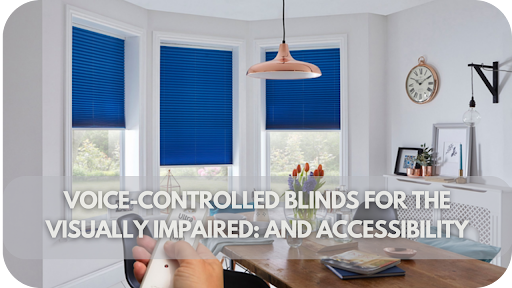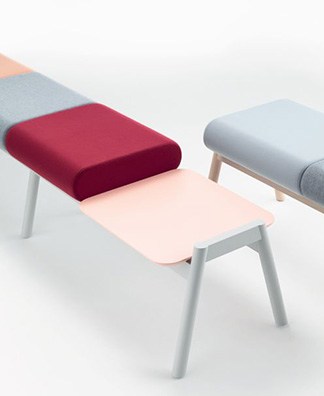Navigating a home should feel seamless, yet 90% of visually impaired individuals face daily challenges with simple tasks like adjusting blinds.
The struggle is real—fumbling with cords, battling inaccessible controls, and managing unpredictable light can make spaces feel anything but welcoming. These frustrations impact independence and comfort.
Let’s explore how voice-controlled blinds enhance independence and convenience, discuss their key features, and highlight the practical benefits of creating a more inclusive living environment.
Types of Accessible Blinds for the Visually Impaired
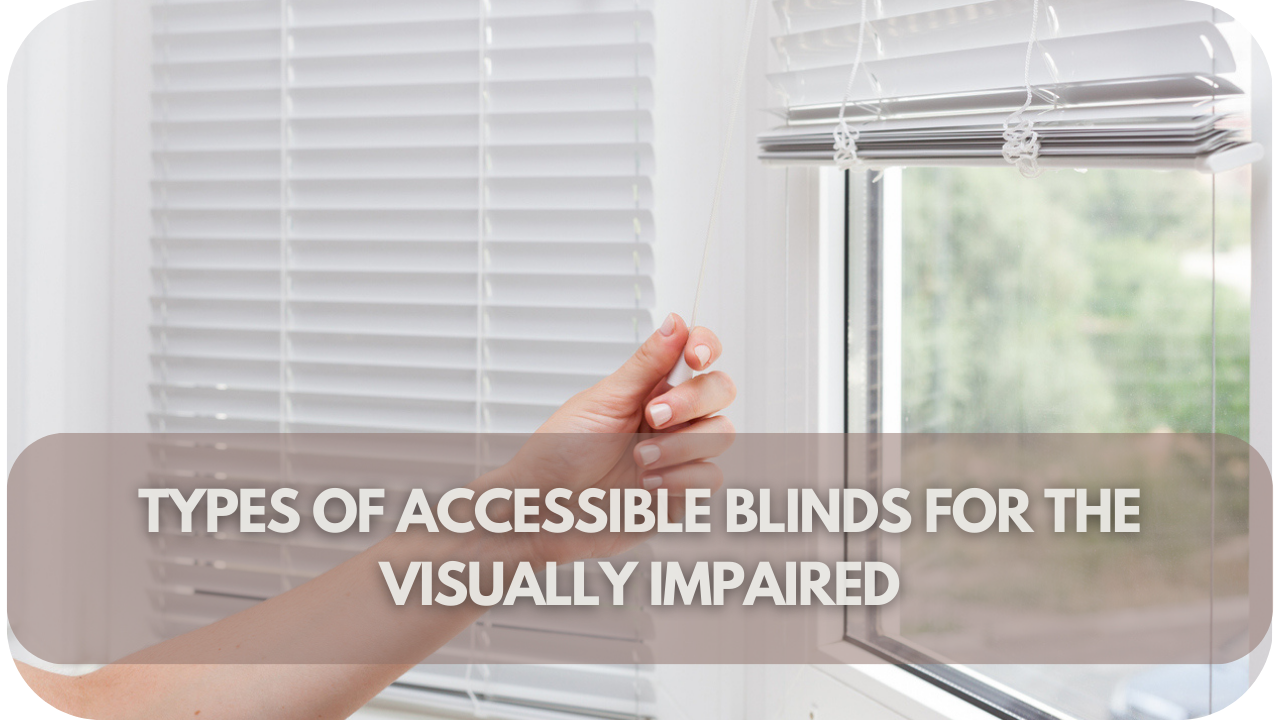
Transform your space with smart blinds that empower low-vision users—seamlessly blending accessibility, independence, and effortless light control.
1. Motorised Roller Blinds
Motorised roller blinds offer an ideal solution for the visually impaired, providing effortless control over light and privacy. Designed for smooth, quiet operation, they move up or down with a button or voice command.
This functionality of hands-free blinds for visual disabilities removes manual adjustments, making them both convenient and accessible. Integration with smart home systems, like Alexa or Google Home, allows users to operate them via voice, adding independence to daily living.
Customisable in various fabrics, including blackout options, motorised roller blinds can be tailored to suit individual preferences, enhancing comfort and control in any room.
2. Motorised Vertical Blinds
Vertical blinds provide an accessible and practical option for the visually impaired, especially for oversized windows or sliding doors. Easy-to-control slats allow precise adjustment of light and privacy.
Motorised options make these blinds even more user-friendly, enabling adjustments through remote control or voice commands. This hands-free feature enhances accessibility, letting users customise their space effortlessly.
Vertical blinds are also available in various materials, including blackout and light-filtering options, to suit different needs and preferences. By combining functionality with flexibility, vertical blinds create a comfortable, adaptable environment that supports independence and control in any room.
3. Motorised Blackout Blinds
Blackout blinds offer an effective solution for enhanced accessibility, providing complete control over light levels. Designed to block out external light, they create a dark, restful environment ideal for privacy and uninterrupted sleep.
For the visually impaired, motorised blackout blinds add convenience by allowing control through voice commands or remote operation. This hands-free functionality reduces physical effort, making adjustments effortless.
With customisable options in colours and fabrics, blackout blinds can be tailored to suit individual needs while enhancing comfort. By minimising external distractions, these blinds contribute to a peaceful, secure space that supports accessibility and well-being.
Key Features of Accessible Blinds for the Visually Impaired
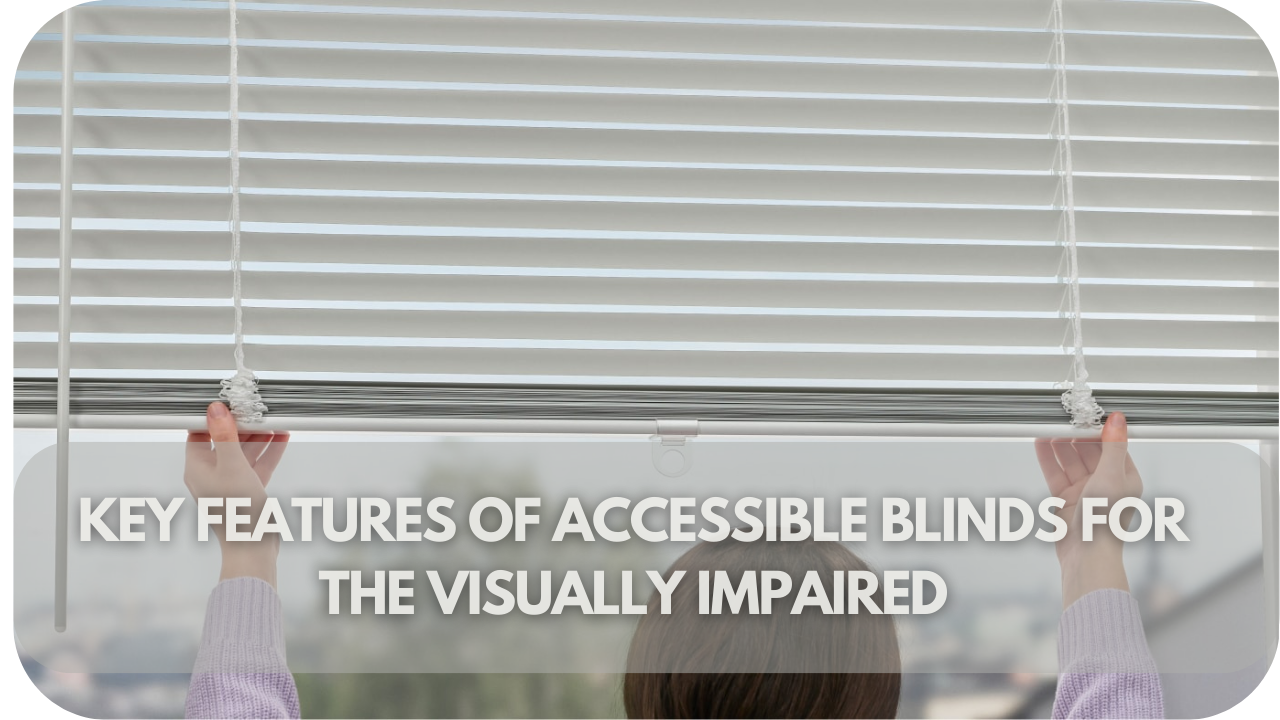
Accessible blinds for the visually impaired come with key features that make managing light and privacy easy and independent. Voice control stands out, allowing adjustments through simple commands and removing the need for manual handling.
Motorisation adds convenience, enabling blinds to open or close at the touch of a button or via a remote. Customisable scheduling is also beneficial, letting users set blinds to operate at specific times and creating a consistent routine.
Blackout and light-filtering options enhance control, tailoring the room environment to individual preferences. These features promote a supportive, accessible living space that adapts to unique needs.
Benefits of Smart Blinds for Low-Vision Users
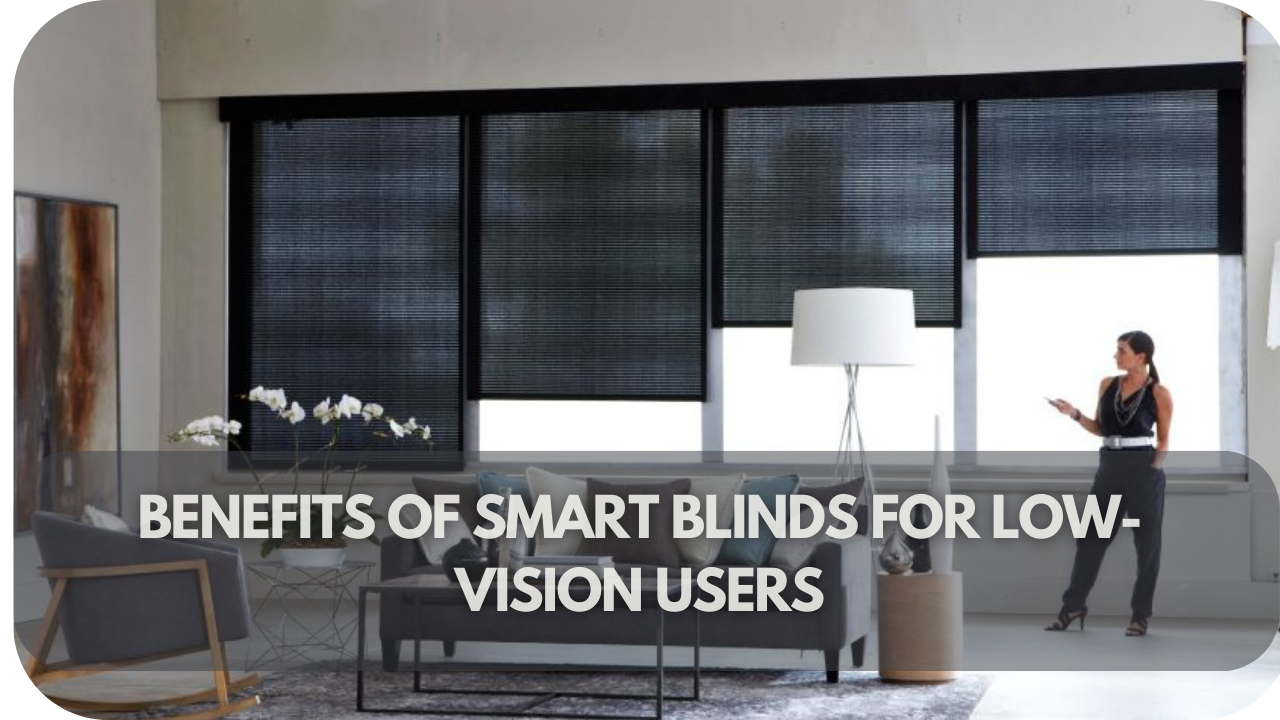
Smart blinds offer low-vision users a range of benefits, offering seamless control over light and privacy. By enabling voice or remote operation, they eliminate the need for manual adjustments. These blinds also support daily routines through automated scheduling, creating a comfortable, accessible living space that adapts to unique needs.
1. Blinds for Enhanced Accessibility
Blinds for enhanced accessibility support visually impaired users, making light and privacy control effortless. With features like motorisation, these blinds can be adjusted remotely or through voice commands, removing the need for physical adjustments.
Voice activation adds another layer of independence, allowing users to operate blinds hands-free with intelligent assistants like Alexa or Google Home. Many accessible blinds also offer automated scheduling, creating a consistent daily routine that promotes comfort and ease.
Customisation options, such as blackout or light-filtering fabrics, enable users to personalise their space, tailoring the environment to specific preferences. By combining functionality with accessibility, these blinds contribute to a more inclusive, user-friendly home.
2. Voice-Activated Window Treatments for Independence
Voice-activated window treatments offer a powerful way to enhance independence for visually impaired users. With simple voice commands, blinds and curtains can be adjusted instantly, eliminating the need for manual handling.
Smart assistants like Alexa or Google Home integrate seamlessly, enabling users to control light and privacy without physical effort. These treatments promote autonomy by allowing full customisation of the environment, from adjusting for sunlight during the day to ensuring privacy at night.
Scheduled automation further supports independence, as blinds can open or close at specific times, establishing a consistent routine. With these features, voice-activated window treatments foster a comfortable, accessible living space designed around ease and empowerment.
3. Hands-Free Blinds for Visual Disabilities
Hands-free blinds provide a practical, empowering solution for those with visual disabilities. They offer effortless control over light and privacy; voice commands or remote devices can operate them. These blinds eliminate the need for manual adjustments.
Voice-activated options enable users to adjust their environment using intelligent assistants like Alexa or Google Home, fostering greater independence.
Automated scheduling further simplifies daily routines, with blinds set to open and close at specific times, reducing the need for frequent adjustments. Hand-free blinds adapt to individual preferences and are available in customisable options, from blackout to light-filtering fabrics. These features create a more accessible, comfortable, and personalised living space for visually impaired users.
4. Easy Integration with Smart Home Devices
Smart blinds seamlessly integrate with popular smart home systems, including Amazon Alexa, Google Assistant, and Apple HomeKit. By connecting to these devices, visually impaired users can control their blinds with simple voice commands, ensuring greater independence.
The setup process is straightforward, often requiring just a few steps to sync the blinds with your home network. Once connected, customisable routines can be established, such as adjusting the blinds at specific times of the day.
Voice commands provide effortless operation, whether users wish to let in more light or block it entirely. This integration makes managing window treatments simple, reducing the need for physical interaction and enhancing overall accessibility.
5. Adjustable Light Control for Comfort
With smart blinds, light control becomes effortless for visually impaired users. Adjusting light levels via voice commands ensures the perfect balance of brightness throughout the day.
Whether more natural light is needed or a dimmer environment is preferred, smart blinds provide a tailored solution. Through integration with smart home systems, routines can be programmed to adjust the light automatically based on the time of day.
This flexibility supports better comfort, reducing glare or enhancing visibility as needed. Visually impaired users can enjoy a consistent and comfortable atmosphere without manual intervention thanks to precise, hands-free adjustments.
6. Remote Monitoring and Control
Smart blinds allow users to control their window treatments remotely, offering greater flexibility. Adjustments can be made anywhere in the house through smartphone apps or smart home hubs.
This feature is handy when mobility or vision impairments make it difficult to reach the blinds manually. The ability to monitor and control the blinds without physical interaction ensures that the environment remains comfortable at all times.
Additionally, schedules can be set to automatically adjust the blinds, reducing the need for continuous adjustments. With remote control, visually impaired individuals gain new independence, enhancing convenience and accessibility.
Control Options for Smart Blinds Designed for Accessibility
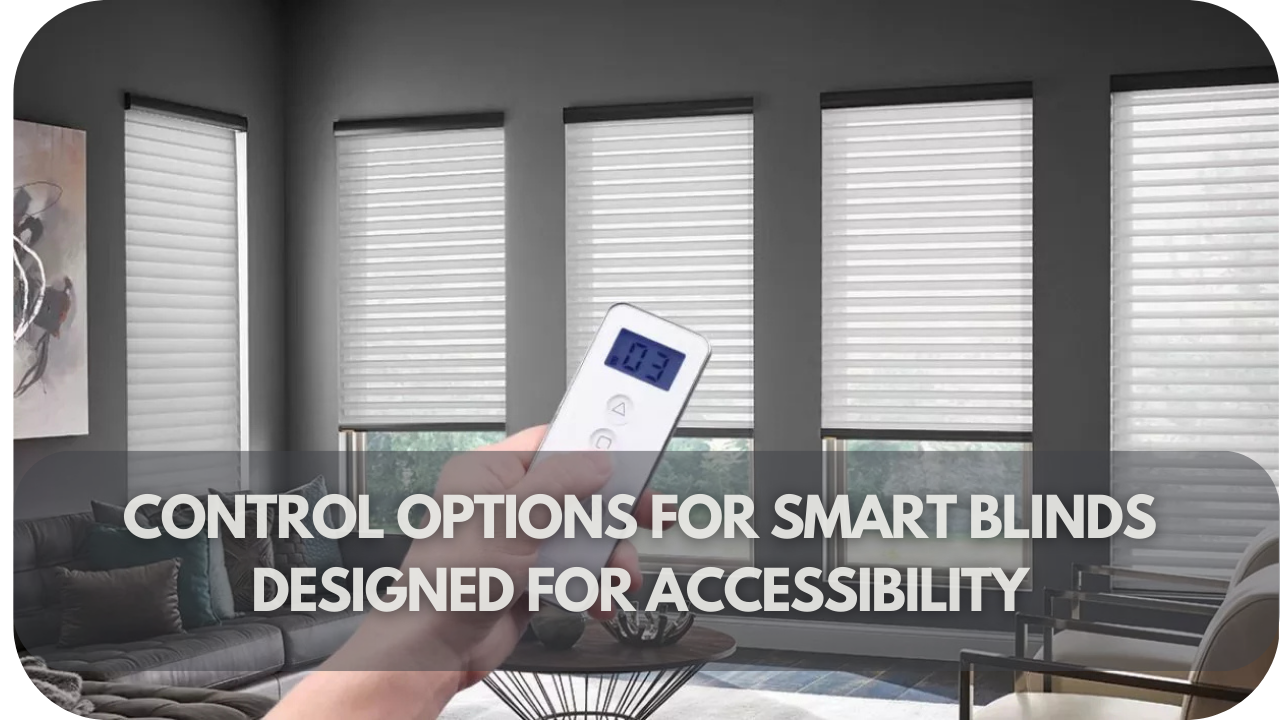
Smart blinds designed for accessibility offer a range of control options, making them adaptable to various needs. Voice control is a standout feature, enabling users to adjust blinds with simple commands via assistants like Alexa or Google Home.
For added convenience, remote controls provide easy access for those who prefer physical devices. Smartphone apps allow users to operate blinds from anywhere, adding flexibility and independence.
Automated scheduling is also available, setting blinds to open or close at specific times and creating a routine that requires no daily input. With these versatile control options, accessible smart blinds enhance comfort and effortlessly support independence.
Installation and Maintenance Tips
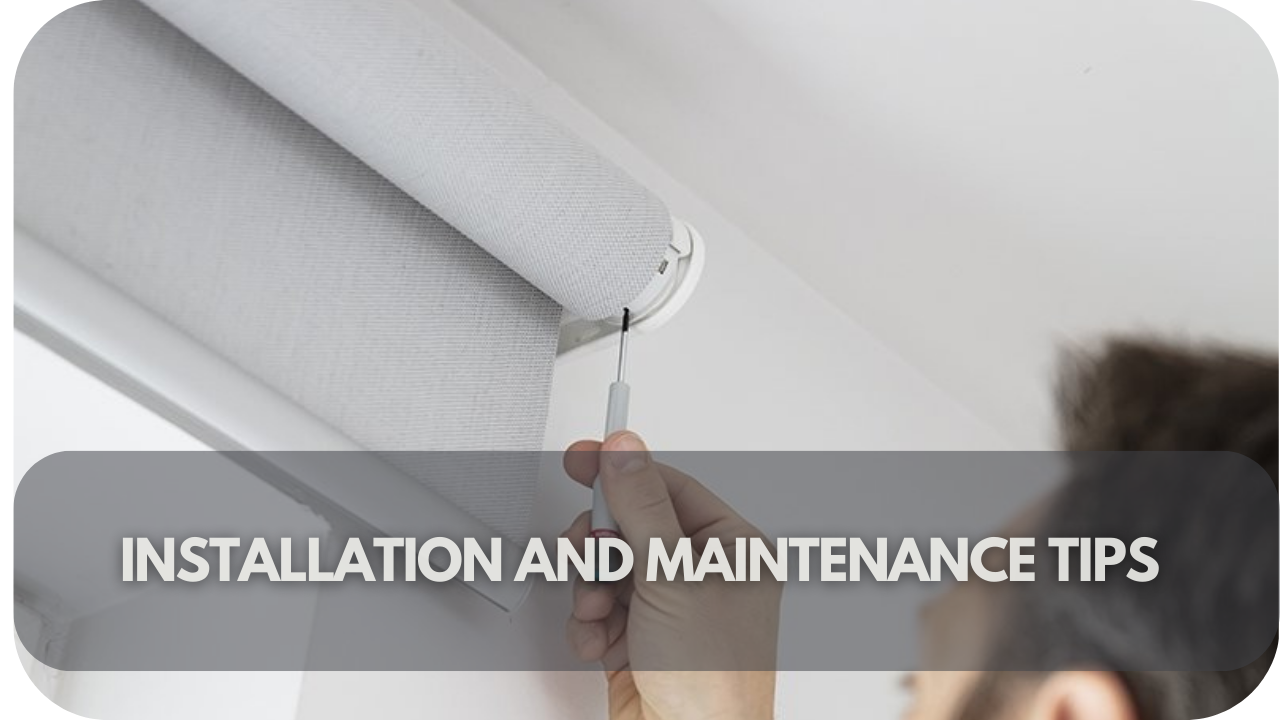
- Ensure Compatibility: Check that the blinds are compatible with your smart home system, like Alexa or Google Home, for seamless voice control.
- Secure Mounting: Follow manufacturer guidelines to mount the blinds securely, especially for motorised options.
- Regular Dusting: Dust the blinds weekly to prevent build-up, which helps maintain smooth operation.
- Battery Check: Check battery levels regularly for battery-operated blinds to ensure they stay powered.
- App Updates: Periodically update the control app to enhance performance and compatibility with your smart devices.
- Follow Maintenance Routine: A consistent maintenance routine ensures your voice-controlled blinds remain reliable and accessible.
Conclusion
Imagine a home where managing light and privacy is no longer a challenging but empowering experience. Voice-controlled blinds offer the visually impaired a revolutionary way to take control of their surroundings easily.
By combining cutting-edge technology with accessibility, these blinds bring independence, comfort, and convenience into everyday life—transforming homes into spaces that truly support unique needs.

